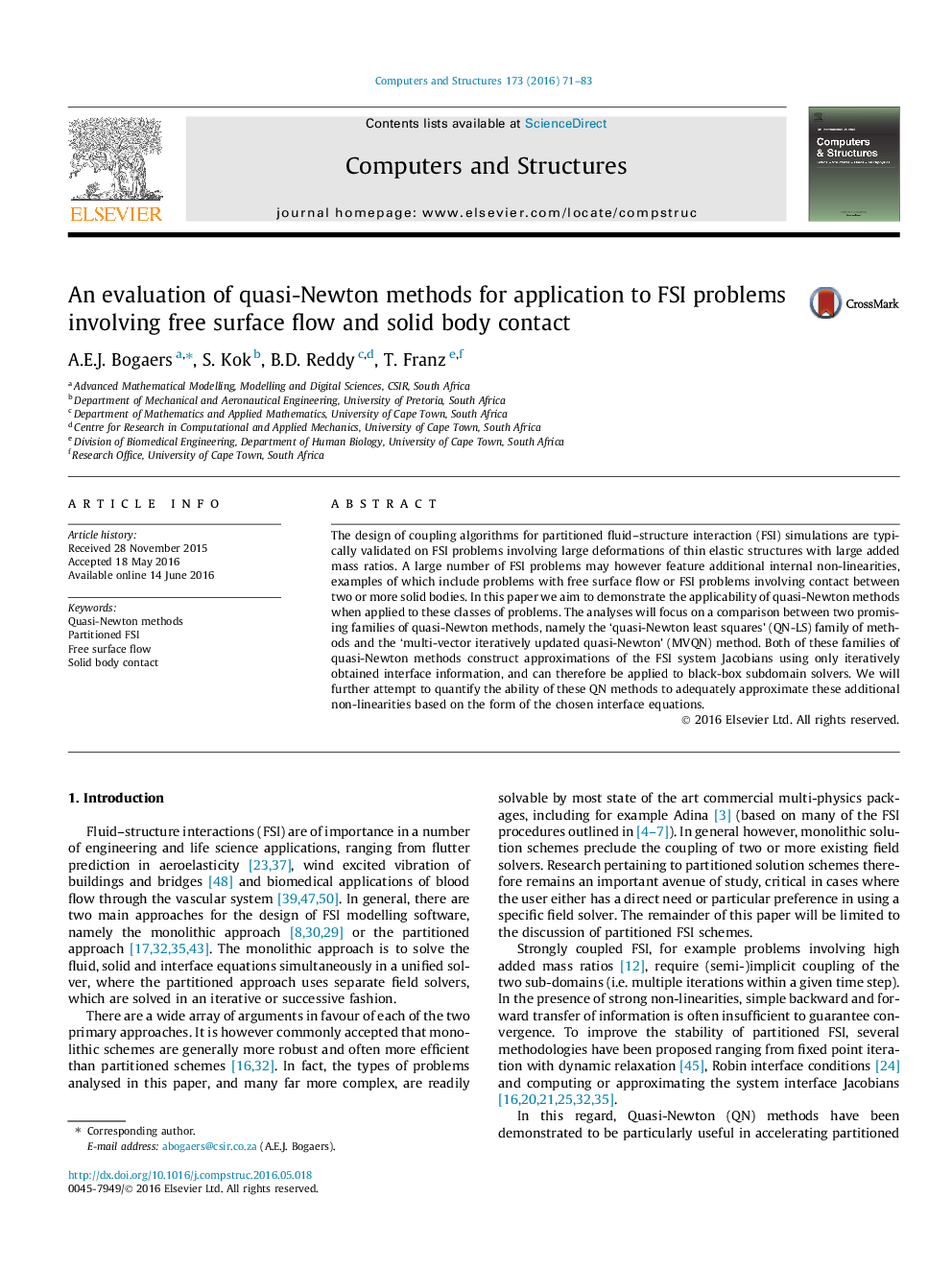| Article ID | Journal | Published Year | Pages | File Type |
|---|---|---|---|---|
| 509874 | Computers & Structures | 2016 | 13 Pages |
•An investigation of Quasi-Newton (QN) methods applied to FSI problems involving internal non-linearities.•Problems include steady state, free-surface flow and solid-body contact.•Comparison of two families of QN methods, namely MVQN and QN-LS.•Comparison of performance based on form of interface residual equations.
The design of coupling algorithms for partitioned fluid–structure interaction (FSI) simulations are typically validated on FSI problems involving large deformations of thin elastic structures with large added mass ratios. A large number of FSI problems may however feature additional internal non-linearities, examples of which include problems with free surface flow or FSI problems involving contact between two or more solid bodies. In this paper we aim to demonstrate the applicability of quasi-Newton methods when applied to these classes of problems. The analyses will focus on a comparison between two promising families of quasi-Newton methods, namely the ‘quasi-Newton least squares’ (QN-LS) family of methods and the ‘multi-vector iteratively updated quasi-Newton’ (MVQN) method. Both of these families of quasi-Newton methods construct approximations of the FSI system Jacobians using only iteratively obtained interface information, and can therefore be applied to black-box subdomain solvers. We will further attempt to quantify the ability of these QN methods to adequately approximate these additional non-linearities based on the form of the chosen interface equations.
